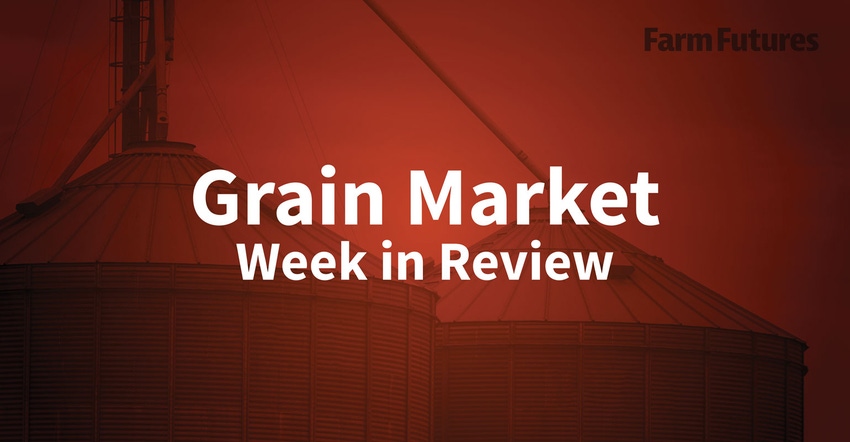September 11, 2020

Missed some market news this week? Here's what was featured on Farm Futures this week.
Ag Marketing IQ
China has been taking soybeans from the three major exporters at a record pace. Preliminary data for the September-June period indicate that together, Argentina, Brazil and the U.S. have shipped an estimated 81 million metric tonnes to China. That’s an increase of 28%/18 MMT over the same 10-month period last year and even exceeds the 2013/14 crop year when Sept-June shipments to China rose 23%/11 MMT year to year.
A report from the Federal Reserve titled Statement on Longer-Run Goals and Monetary Policy Strategy doesn’t sound like it would make much news. Financial markets had already widely anticipated release of the document, put out by the central bank at the end of August. But traders, bankers and economists all took note of the update from the Fed, and farmers should too. It could impact everything from the interest rates on farm loans, to the value of the dollar and even farmland and perhaps commodity prices too.
After a five-month rally, cotton futures seem to be searching for fresh, friendly, fundamental news. Prices slipped earlier this week, posting an outside bearish reversal on daily charts. Seeing this technical signal makes me wonder if investors may be headed to the sidelines due to uncertain news that President Trump was considering blocking imports of cotton and cotton products from China’s western region of Xinjiang over accusations of forced labor.
WASDE
While dry weather persisted across pockets of the Midwest at the time USDA and traders were compiling data for the August World Agricultural Supply and Demand Estimates (WASDE) report, most in the industry believed yields would shatter records and new production highs would dominate the headlines as farmers geared up for harvest. But Mother Nature had other plans. And as another WASDE report nears tomorrow, September estimates will begin to trend radically more different than those of August. Here’s a preview of what to expect ahead of tomorrow’s reports.
As expected, USDA lowered corn and soybean harvest forecasts for 2020 after a month of hot and dry weather as well as a devastating August windstorm that swept across Iowa. Early trade gains in soybeans were due largely to tighter old crop ending stocks, with corn also staying in the green immediately following the report.
Exports
USDA’s latest grain export inspection report, covering the week through August 27 and released Monday morning, didn’t have a lot of supportive data for traders to chew on. Corn fell below all trade estimates and slumped to less than half of the prior week’s tally, with soybeans and wheat landing on the lower end of trade estimates this past week.
An export sale was reported each day during this holiday-shortened week. China bought soybeans, with unknown picking up corn and soybeans.
The 2020/21 marketing year for corn and soybeans began September 1, and the latest round of export data from USDA straddled that line, covering the week from August 28 through September 3. The agency’s latest report showed impressive new crop sales for both corn and soybeans this past week thanks to recent Chinese purchases, while wheat sales slowed compared to recent weeks.
Crops
Corn and soybean crop quality has been steadily moving lower over the past several weeks, and USDA’s latest batch of crop progress data, out Monday afternoon and covering the week through September 6, shows that trend unfolding once again.
Weed pressure in Ohio last week provided a preview of what may come next year after Dicamba was taken off the market earlier this summer. One Ohio Farm Futures reader stated “heavy weed pressure from giant ragweed this year. We were not able to spray Dicamba.” But several reports throughout the year of crop damages due to chemical drift were persistent from Feedback from the Field respondents. “Crop damaged by dicamba over drift not only locally but many miles around,” a Minnesota grower lamented.
Podcast
USDA’s numbers could go even lower than industry estimates – or, they could rattle the markets by coming in with higher-than-expected supply data. We share our latest thoughts on outside markets that sometimes influence grain prices, including the stock market, energy prices, the U.S. Dollar, gold and copper – all of which have shown plenty of volatility this spring and summer. Listen to the Midweek Markets podcast.
Recaps
Corn futures inched up this morning on hopes for increased demand for U.S. pork and corn feedstuffs to fuel it after Germany reported a case of African swine fever yesterday. South Korea had already banned imports of German pork as markets expect China to follow suit. Chinese demand and hopes for increased U.S. pork production being routed to the European Union spurred gains in the soy complex this morning as November futures rose $0.0625/bushel to $9.8375. An uptick in activity from several top global importers supported gains in the wheat complex this morning. A weakening dollar also underpinned strength in the wheat markets leading into today’s WASDE reports.
This morning’s World Agricultural Supply and Demand Estimates report from USDA held plenty of supportive data for corn and soybean prices, which moved substantially higher following its release. Additional bullish export data out early this morning applied additional tailwinds. Wheat prices were less fortunate, with a round of technical selling pushing contracts into the red – although aside from nearby Kansas City HRW contracts (which dropped 3%), losses were not overly severe today.
About the Author(s)
You May Also Like




